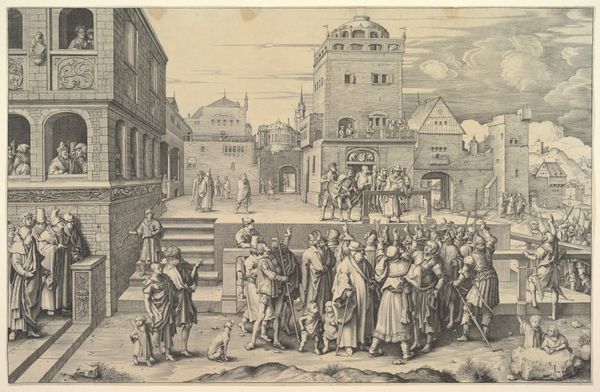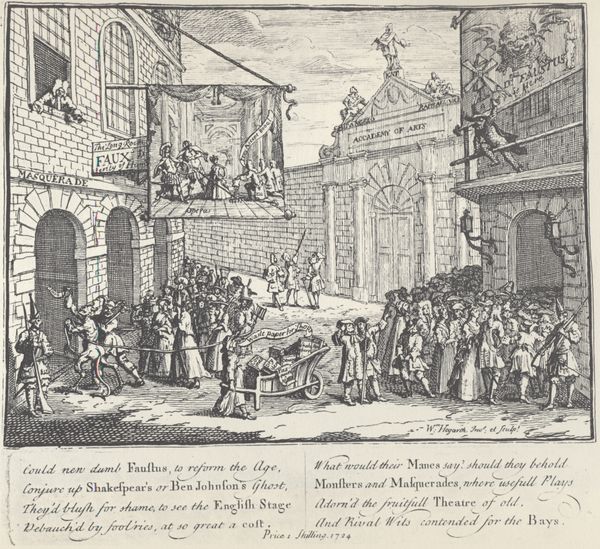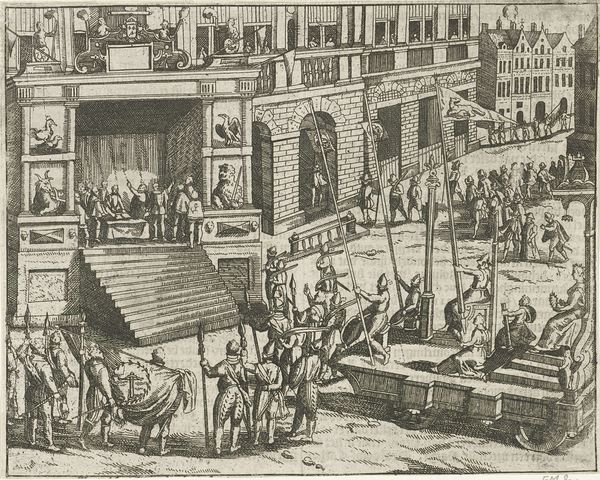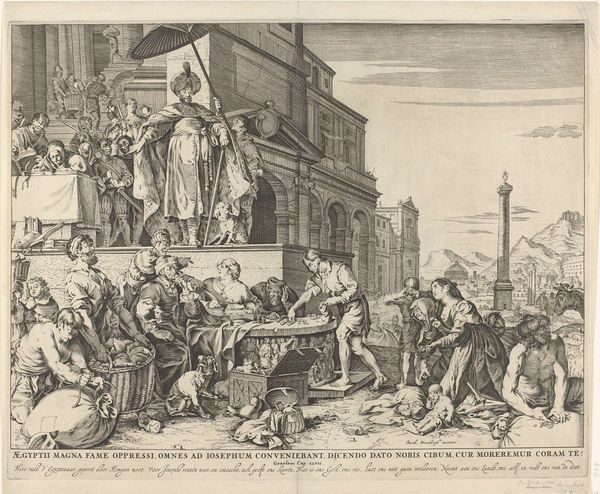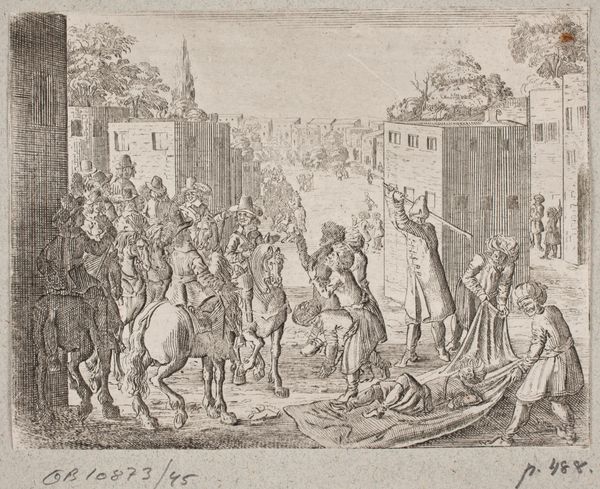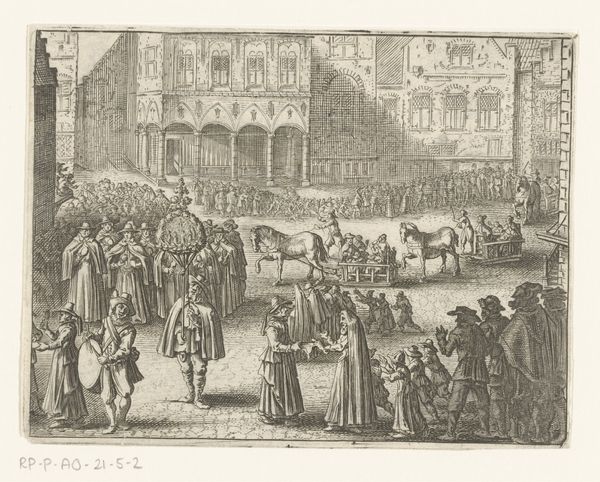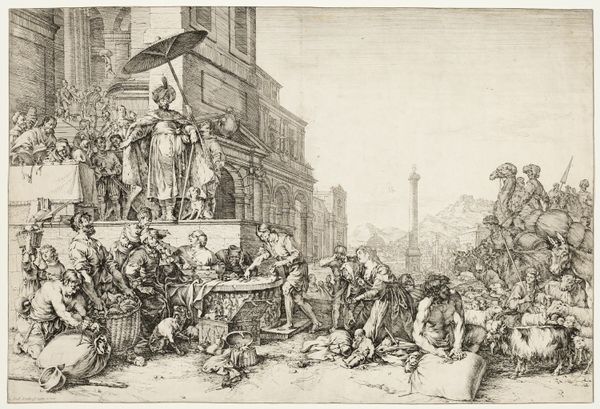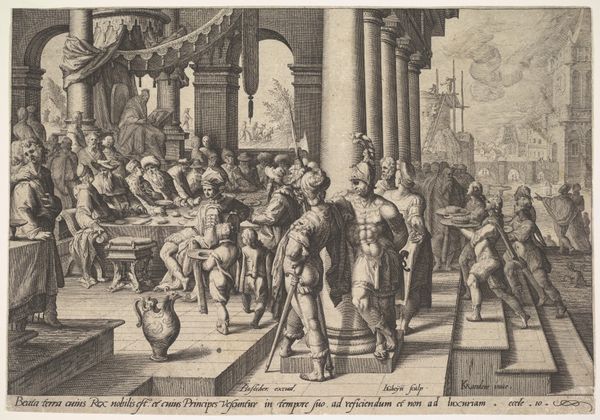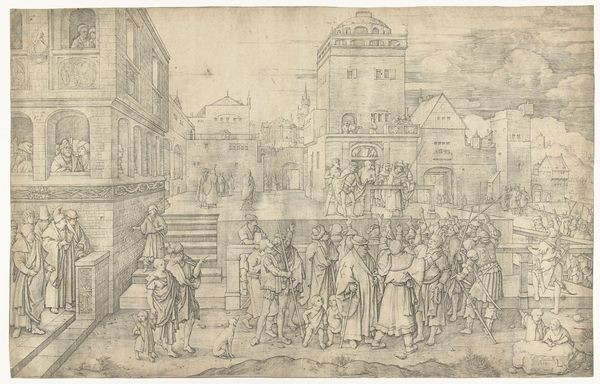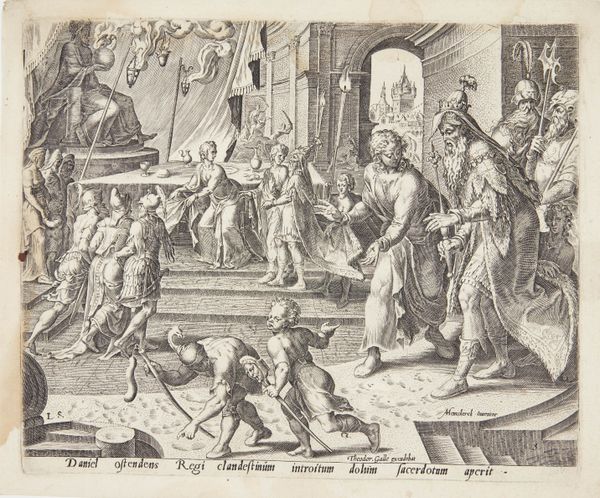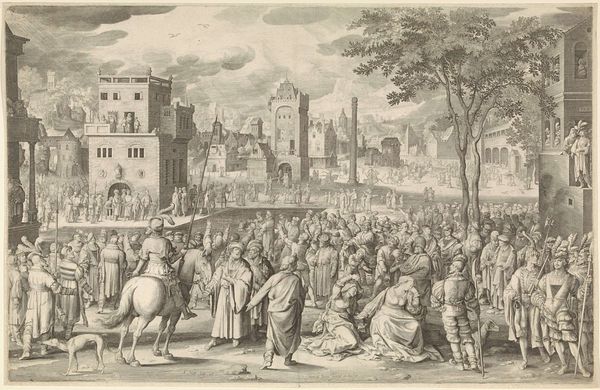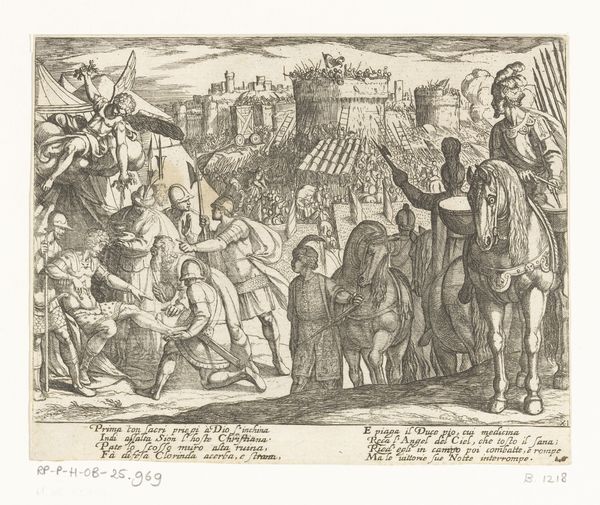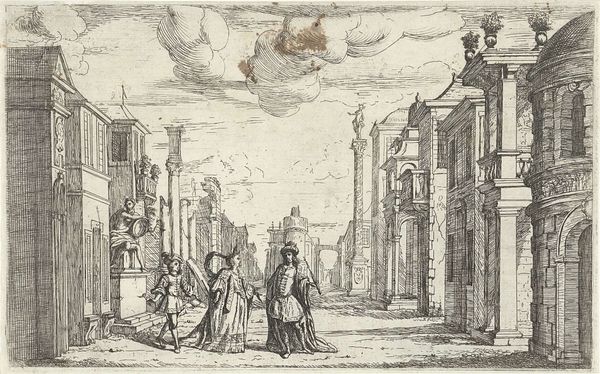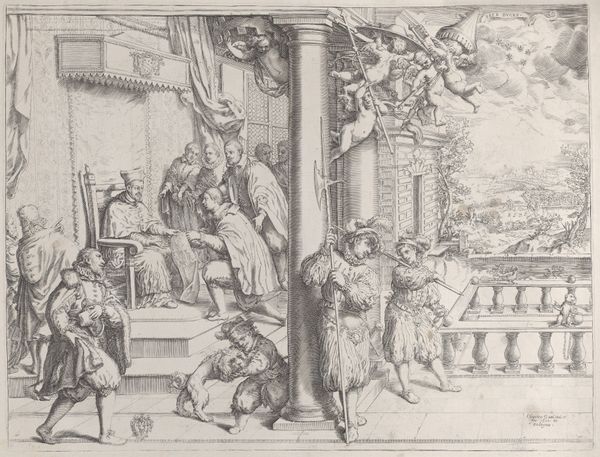
print, engraving
# print
#
landscape
#
figuration
#
cityscape
#
history-painting
#
northern-renaissance
#
italian-renaissance
#
engraving
Dimensions: 11 3/8 x 17 7/8 in. (28.89 x 45.4 cm) (sheet)
Copyright: Public Domain
Lucas van Leyden made this print, *The Large Ecce Homo*, using an engraving technique. This process involves cutting lines into a metal plate, which is then inked and pressed onto paper. Here, the material is paramount. The incised lines dictate every detail, creating textures that define architectural structures and the folds of clothing. This scene is from the Bible, and the lines form a stage for a scene filled with characters. Notice how the weight of the line creates depth, pulling us into the crowded square. The making of the image involved laborious, precise work, as the artist manipulated metal and ink. Engraving was part of a printmaking boom in Europe at the time, and were commercial objects that circulated widely, spreading stories and ideas. The inherent qualities of the print medium allowed artists to produce multiple copies, making art accessible to a broader audience and encouraging the spread of stories such as this one. So remember, to fully appreciate this artwork, we must consider not only its artistic skill, but also its social and economic context.
Comments
minneapolisinstituteofart almost 2 years ago
⋮
Lucas van Leyden was the outstanding artist of the Renaissance in Holland. In his superb paintings, drawings, engravings and woodcuts, he still excites the eye and draws the viewer into his rich world of narrative. According to his early biographer Karel van Mander, Lucas would have been just 16 years old when he produced this image. Even if Lucas was not quite that young, we see him creating one of the most complex and subtle engravings ever made at that time. Lucas sets the scene amid a grand architectural complex of palaces and towers flanking an elevated plaza that serves as a stage. A boisterous crowd gathers as Pontius Pilate invites them to determine the fate of Christ who is bound at the wrists and wears the crown of thorns and the mantle that his tormenters placed on his shoulders. As Pontius Pilate proclaims, Ecce homo (Behold the man), people gathered at windows and parapets of the surrounding buildings look on impassively. Details of courtly and military costume, Netherlandish renaissance architecture, and mountainous landscape invite our eyes to roam through this microcosm. The range of lighting effects within the image as well as the minute description are so skillfully executed that, in this era, Albrecht Dürer was the only other artist capable of such feats of engraving. The closely modulated atmospheric perspective works in tandem with the forceful perspectival lines of recession that push our gaze deep into the image, where the main action of the story unfolds.
Join the conversation
Join millions of artists and users on Artera today and experience the ultimate creative platform.
